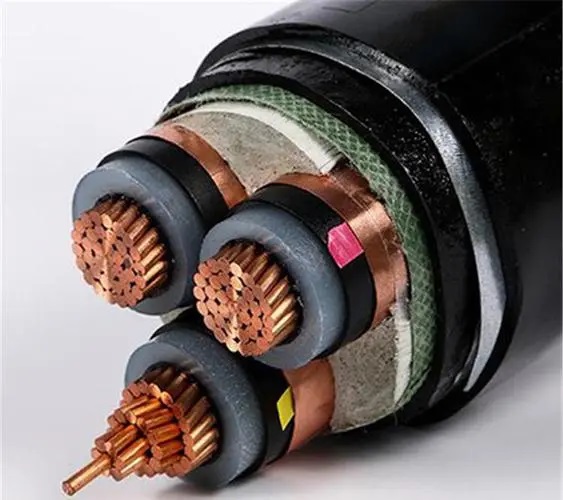The Versatile Round Power Cable A Comprehensive Guide

Introduction
Power cables are essential components in our modern world, connecting electrical devices to a power source and enabling them to function. Among the various types of power cables available, the round power cable stands out for its versatility, durability, and efficiency. In this comprehensive guide, we will delve into the world of round power cables, exploring their design, construction, applications, advantages, and future developments.
Understanding Power Cable Manufacturer , also known as circular power cables, are cables with a cylindrical shape that are commonly used for transmitting electrical power from a power source to various devices and equipment. These cables are typically made up of multiple conductors, insulation materials, and protective sheathing. The round shape of these cables provides several advantages in terms of flexibility, ease of installation, and efficient power transmission.
Design and Construction
Round power cables are designed and constructed using high-quality materials to ensure optimal performance and durability. The key components of a round power cable include:
1. Conductors: The conductors in a round power cable are responsible for carrying the electrical current from the power source to the connected device. These conductors are typically made of copper or aluminum due to their excellent conductivity properties.
2. Insulation: Insulation materials are used to protect the conductors from external environmental factors and prevent electrical leakage. Common insulation materials used in round power cables include PVC (Polyvinyl Chloride), XLPE (Cross-Linked Polyethylene), and rubber.
3. Sheathing: The outer sheathing of a round power cable provides additional protection to the internal components and ensures the cable's durability and longevity. The sheathing material is usually made of PVC, LSZH (Low Smoke Zero Halogen), or other flame-retardant materials.
Applications of Round Power Cables

Round power cables find wide-ranging applications across various industries and sectors due to their versatility and reliability. Some common applications of round power cables include:
1. Industrial Use: Round power cables are extensively used in industrial settings to power machinery, equipment, and control systems. These cables are designed to withstand harsh environmental conditions and heavy-duty usage.
2. Residential and Commercial Buildings: Round power cables are commonly used in residential and commercial buildings to supply electricity to lighting fixtures, appliances, and other electrical devices. Their flexibility and ease of installation make them ideal for indoor wiring applications.
3. Telecommunications: Round power cables are also utilized in telecommunications infrastructure to transmit power to communication equipment, such as routers, switches, and servers. These cables are designed to meet the specific power requirements of telecommunications systems.
Advantages of Round Power Cables
Round power cables offer several advantages over other types of power cables, making them a popular choice in various applications. Some of the key advantages of round power cables include:
1. Flexibility: The round shape of these cables allows for greater flexibility and easier installation in tight spaces or complex configurations. This flexibility makes round power cables suitable for a wide range of applications.
2. Durability: Round power cables are designed to withstand mechanical stress, environmental factors, and temperature fluctuations, ensuring long-term performance and reliability. The high-quality materials used in their construction make them resistant to wear and tear.
3. Efficient Power Transmission: Round power cables are designed to minimize power loss during transmission, ensuring efficient energy transfer from the power source to the connected devices. This efficiency helps optimize the overall performance of electrical systems.
Future Developments in Round Power Cables
As technology continues to advance, the field of power cables is also evolving to meet the increasing demands of modern applications. In the future, we can expect to see several developments in round power cables, including:
1. Enhanced Efficiency: Manufacturers are working on developing round power cables with improved efficiency to reduce power loss and enhance energy savings. This may involve the use of advanced materials and design techniques to optimize power transmission.
2. Smart Integration: With the rise of smart technology, round power cables are likely to incorporate smart features, such as monitoring capabilities, remote control, and self-diagnostic functions. These innovations will enable better management and control of electrical systems.
3. Eco-Friendly Solutions: The increasing focus on sustainability and environmental conservation is driving the development of eco-friendly round power cables. Manufacturers are exploring the use of recyclable materials and energy-efficient designs to reduce the environmental impact of power cables.
Conclusion
Round power cables play a crucial role in powering our modern world, enabling the efficient transmission of electrical energy to various devices and equipment. With their versatility, durability, and efficiency, round power cables have become indispensable components in industrial, residential, and commercial applications. As technology advances, we can expect to see further developments in round power cables, leading to enhanced performance, smart integration, and eco-friendly solutions. By understanding the design, construction, applications, advantages, and future developments of round power cables, we can appreciate the significance of these essential components in our daily lives.
